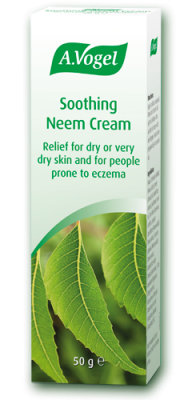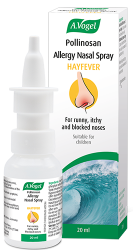Allergic rhinitis and a skin rash
Allergic rhinitis means the immune system has an extreme reaction to harmless things like pollen and mould spores. When it comes into contact with these things it releases histamine - a defence system that would see off a cold or flu. As a result, the individual experiences symptoms similar to a cold or flu such as congestion, sneezing and watery eyes.
However, for an allergic rhinitis sufferer, a skin rash may also occur when an allergen lands on the surface of the skin. This makes the area itchy and may eventually lead to broken skin and redness - the tell-tale signs of a rash.
Some allergic rhinitis sufferers may also experience hives which are large red lumps that form on the skin.
These problems are not as common as other allergic rhinitis symptoms such as congestion but it is no less problematic.
How to tell if allergic rhinitis is causing a skin rash
From a heat rash to a cosmetic allergy, there are many causes of skin irritation. So, to help you distinguish the cause, here are a few things to consider.
Is your rash persistent?
If your answer to this question is yes, my rash does keep coming back, it is more likely to be as a result of an allergen.
When does your rash appear?
Pollen is the most common cause of allergic rhinitis so if your rash develops in the spring and summer months when plants are pollinating, it’s likely to be a result of allergic rhinitis.
Where do your symptoms feel worse?
Dust mites, mould spores and animal dander also cause allergic rhinitis. All of these are found indoors so if you feel your symptoms worsening there, allergic rhinitis could be the reason for this.
What can you do?
When suffering from a rash due to allergic rhinitis, there are a few things you can do to try and ease the problem.
Avoid body wash and bubble baths – whilst you have a rash it’s best to avoid anything that has the potential to make it worse like body wash and bubble bath. If you feel the need to use either of these things make sure they are suitable for sensitive skin.
Keep your skin cool – pressing a cold, damp cloth to the surface of your skin may help to ease itching and discomfort. Alternatively, you could try clay poultices as these can also help skin rashes - be sure to use natural poultices though as any chemical ingredients might just make the problem worse.
Try an aloe vera gel – this has a soothing effect on the skin so may ease any irritation on the skin.
Try an oatmeal paste – uncooked oatmeal can be mixed into a paste with some cold water and can then be applied to the skin. Oatmeal can be beneficial for a skin rash as it contains anti-inflammatory properties which may ease the problem.
How to avoid allergens
This may be easier said than done but avoiding triggers will certainly improve your rash. However, how you do this depends on what the allergen your body is sensitive to.
Animal dander
If animal dander is causing you to develop a rash it may prove beneficial to have pet-free zones in your home. A bedroom would be a good option for this as you spend a lot of time there at night. This should prevent your symptoms from worsening.
Dust mites
These little creatures like to hide in bedding so, to prevent them from causing a rash, it’s best to wash your sheets once a week and use allergy-proof bedding.
Mould spores
The best action you can take to avoid mould is to use an extractor fan when cooking and cleaning and to address any sources of dampness such as, for example, a leaking pipe.
Pollen
If you know pollen causes your body to come out in a rash, keep an eye on the pollen count so that you have some control over your symptoms. When counts are high, try to stay inside and when levels are lower, this is when it should be safer to venture outside.
Herbal remedies
 Neem Cream helps to soothe irritation and redness on the skin that is the result of allergic rhinitis. Our Neem Cream is made from fresh Neem leaf so that none of the beneficial properties of this plant are lost during the production process.
Neem Cream helps to soothe irritation and redness on the skin that is the result of allergic rhinitis. Our Neem Cream is made from fresh Neem leaf so that none of the beneficial properties of this plant are lost during the production process.
Pollinosan Hayfever Tablets are used to treat a variety of hayfever symptoms including congestion, watery eyes, sneezing and itching. It contains seven tropical herbs that help to make it a non-drowsy remedy that can be taken alongside medications for hayfever.
Conventional treatments
Anti-histamines may be prescribed by a doctor if you develop a rash due to allergic rhinitis. These can reduce itchiness by helping the body to level its histamine release – the chemical it produces when it comes into contact with certain allergens.
Steroids may also be prescribed by doctor if the skin rash is very severe as this helps to reduce inflammation.






 Looking for a solution to curb those hayfever symptoms such as itchy eyes, constant sneezing and congestion, then look no further than A.Vogel’s Pollinosan Hayfever tablets.
Looking for a solution to curb those hayfever symptoms such as itchy eyes, constant sneezing and congestion, then look no further than A.Vogel’s Pollinosan Hayfever tablets.


